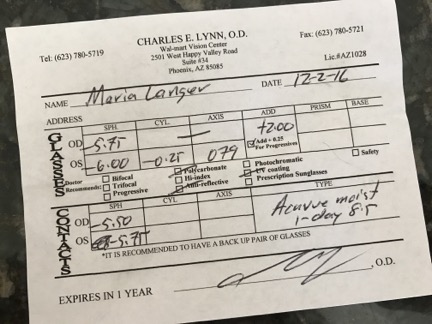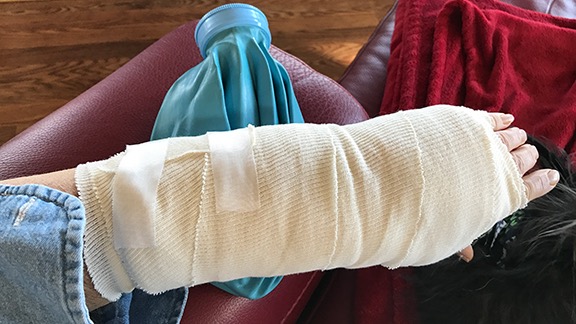I learned something new today, thanks to a debate with a friend.
The other day, a friend and I were discussing milk.
I told her I preferred 2% milk but was trying to get to like 1% milk. To me, it was about reducing unnecessary fat and calories in my diet. I’ve been drinking 2% milk for years and actually now prefer its flavor and consistency over whole milk. Whole milk, to me, had become too rich, almost like a light cream. I wanted to start liking 1% milk in an effort to further reduce fat and calories for a healthy diet. I already enjoy fat-free yogurt; indeed, I don’t think I’ve had whole milk yogurt in years, if ever. (Do they even make it? I guess I could make my own.)
My friend was adamantly opposed to reduced fat milk. I gathered from our conversation that she thought they added things to the milk that made it less healthy when they removed the fat. Or that something about the actual process of making reduced fat milk caused it to be less healthy. In any case, she thought reduced fat milk was bad and didn’t want to hear anything else about it.
If there’s one thing I’ve learned, especially in the past three or four years, is that when someone is stuck with an idea in their head it’s no use debating the point. At least not without facts. And although I suspected there was nothing unhealthy about reduced fat milk, I had no evidence to prove my point. So I let the subject drop and we chatted about other things.
But this morning, when I sat down with my coffee and some time to kill before dawn, I set about finding some evidence to support my point of view.
How Reduced Fat Milk is Made
I Googled “How do they make reduced fat milk?” I got a number of search results. The first, from The Kitchn website, had the answer I was looking for: “How is Skim Milk Made?“. Here’s the pertinent info:
So how is skim milk made? Traditionally, the fat was removed naturally from milk due to gravity. If fresh milk is left to sit and settle, the cream — which is where most of the fat is — rises to the top, leaving behind milk with much less fat.
The quicker, modernized way of making low-fat and skim milks is to place the whole milk into a machine called a centrifugal separator, which spins some or all of the fat globules out of the milk. This occurs before the milk is homogenized, a process which reduces all the milk particles to the same size so that natural separation doesn’t occur anymore.
The article goes on to provide some other interesting information about milk and fat free milk. Among that information was a note about additives:
Federal law mandates that most skim milk has to be fortified with vitamin A and sometimes vitamin D. This is due to the fact that even though whole milk naturally has a fair amount of both, the vitamins are fat soluble and thus lost when the milk fat is removed during the skimming process.
Milk solids in the form of dried milk are also added since they contain proteins that help thicken the watery consistency of skim milk.
Not only was this likely the additives that worried my friend, but it also explained how some brands of skim milk were far more palatable than others: they likely added back more dried milk to thicken it up.

The only thing that creeps me out about Shamrock Foods milk is its extraordinarily long shelf life: the quart I bought last week is supposedly good until March. Could it be the plastic packaging?
Now I don’t know if the 2% milk I normally consume has a lot of vitamins or any milk fat added back in. The milk in my camper’s refrigerator now — remember, I’m on the road this winter — is from Shamrock Farms and says it contains “reduced fat milk, Vitamins A & D.” Nothing about milk solids.
So nothing I learned about the production of reduced fat milk has scared me away from drinking it.
Benefits of Whole vs. Reduced Fat Milk
Scrolling down in the same search results, however, brought up links to two different articles in TIME Magazine. I read them both. After all, I wanted to learn the truth — a truth that would either support or even change my own opinions.
- The Case Against Low-fat Milk Is Stronger Than Ever from April 4, 2016 cites a study of people whose health had been tracked for 15 years. The conclusion was that, if anything, people who consumed whole fat dairy products were less likely to be obese or suffer from type 2 diabetes.
- Why Full-Fat Dairy May Be Healthier Than Low-Fat from March 5, 2015 cites the results of over 25 studies that concluded that “people who eat full-fat dairy are no more likely to develop cardiovascular disease and type 2 diabetes than people who stick to low-fat dairy. When it comes to weight gain, full-fat dairy may actually be better for you.”
Huh.
Both articles suggested that there might be something special about the fat in dairy that works with our bodies to help them process the foods we eat and help us feel full. Dairy fat could actually be preventing us from eating less healthy sugars and carbs to feel sated. And these articles maintained that it was foolhardy for diets to recommend cutting (or eating) just one kind of nutrient — for example, low fat or fat-free diets — when the body naturally works with all consumed nutrients together.
I understand how these studies could have gotten these results. Back in the late 1970s and early 1980s when the fat-free diet craze was in full swing, stores were full of fat-free processed foods. I know because I still lived at home (or at least visited regularly) and saw that my mother bought them. She, like so many other people, thought that the answer to keeping weight under control was to keep as much fat out of their diets as possible. But rather than do this by eating naturally low fat foods like fruits and vegetables and whole grains, they did it by buying processed foods labeled “fat free.” They then consumed as much as they wanted, not paying attention to the ingredients that made this food taste good despite the lack of fat: mostly sugar. Calorie counts were sky high. It was around this time that I started reading labels and making food choices based on what I read. While I don’t have a perfect diet, I’ve learned to minimize my time in a supermarket’s middle aisles where all the processed foods reside.
The Calorie Argument
Okay, so what about calories? The articles both confirmed that one of the benefits of reduced fat dairy products was the accompanying reduction in calories. So I decided to see just how many calories I was saving by switching between whole, 2%, and 1% milk. (I really detest fat-free milk and generally only have it in lattes because I think it froths better. Fat free yogurt tastes fine to me.)
So I Googled “What is the calorie count for whole, 2%, 1%, and fat free milk?” The PopSugar website had the answer I sought: “Whole vs. Reduced vs. Low-Fat vs. Nonfat Milk.” Here’s the nutritional information that interests me for one 8-ounce cup of milk:
| | Whole | 2% | 1% | Fat-free |
|---|
| Calories | 150 | 130 | 110 | 90 |
| Total Fat (g / %) | 8 / 3 | 5 / 2 | 2.5 / 1 | ~0 / 0 |
What’s interesting when you read data in the article’s table is that they all the same fiber, carbs, and protein but 1% and fat-free milks actually have more sugar — although admittedly it isn’t much more: 11g vs. 12g.
Now I don’t drink a lot of milk, although I probably do drink more than the average adult. I’ll go through a half gallon in about a week. Every cup of 2% is saving me only 20 calories over whole milk and a switch down to 1% milk would only save another 20 calories. Is it worth it? I don’t think so.
At this point, I sort of regret getting so used to 2% milk.
An Exercise in Critical Thinking
So what did I learn?
In a way, my friend was right: reduced fat milk isn’t any better for you than whole milk. And if she believed that there were additives, she’s right — although I’m not sure those additives make reduced fat milk any less healthy.
But in a way, she was also wrong: reduced fat milk isn’t really bad for you. It just doesn’t give the health benefits we’ve been led to believe.
As for me, I was wrong. There’s no real reason to switch to reduced fat milk. I have no evidence to show her. I have nothing to stand on for pressing my original point of view.
Will I change the way I buy milk? Probably not — at least for now. I really do like 2% milk. I’m used to it. To me, drinking whole milk is almost like drinking cream. I’m not so picky, however, that I’ll turn down whole milk if that’s the only thing available. I’m not worried about 2% milk hurting my health.
But 1% and fat-free milk have definitely become a little bit less attractive. No real calorie benefit and what’s with the added sugar? And what if milk fat really is good for you? Should I really be minimizing it?
And that’s what critical thinking is all about, folks. Gathering information and forming your own opinions after thinking about what you’ve learned. Even if you begin researching with a preconceived notion, you need to be ready to change your mind when the evidence clearly tells you your notion is wrong. You shouldn’t just look for evidence that supports your view. You should look for evidence that tells the whole story, the true story, or at least the story that properly conducted research and established facts support.
I sure wish more people would learn to think critically in today’s world.
 The ACA made it easier to shop for insurance by setting up a marketplace. It prevented insurers from denying coverage or setting unreasonable rates for people with pre-existing conditions. It required insurers to provide a list of basic coverages that a person might need. It covered, at no additional cost to insured people, annual well-care visits to help prevent illnesses or to catch them before they became serious problems. It required more employers to offer health care benefits to employees. It encouraged everyone to get health insurance coverage to increase the pool of insured individuals, thus reducing the overall cost of coverage for each of us. It prevented insurers from taking obscene profits on healthcare coverage by setting maximum profit levels that actually refunded premiums to customers. These are all benefits that help those of us who don’t work for big companies that offer health insurance in a benefits package.
The ACA made it easier to shop for insurance by setting up a marketplace. It prevented insurers from denying coverage or setting unreasonable rates for people with pre-existing conditions. It required insurers to provide a list of basic coverages that a person might need. It covered, at no additional cost to insured people, annual well-care visits to help prevent illnesses or to catch them before they became serious problems. It required more employers to offer health care benefits to employees. It encouraged everyone to get health insurance coverage to increase the pool of insured individuals, thus reducing the overall cost of coverage for each of us. It prevented insurers from taking obscene profits on healthcare coverage by setting maximum profit levels that actually refunded premiums to customers. These are all benefits that help those of us who don’t work for big companies that offer health insurance in a benefits package.






